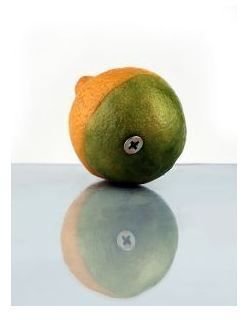Protect Your Ideas for New Inventions
Wow! What is That Thing?
So, you’ve come up with a wonderful idea for a new invention. Congratulations. Now, if you want to ensure that your invention gets made - and that you get credit for it - you will need to do a bit of work. First, take a few minutes to write your idea down on paper. You’ll want to put this in a secure location such as your filing cabinet or save it as a password protected file. Ideas are worth money; sometimes they are worth lots of money. Do you have your basic idea down on paper? Great. Now you’re ready for the next step. No matter how much you’d like to share your great, groundbreaking idea with others, don’t. This could jeopardize your ability to procure a patent.
Research It!
Now, you’ll need to do a little research - just to make sure that you didn’t invent something someone else has invented. You’ll want to look online at the United States Patent and Trademark office. Check to see whether your invention has already been, well, invented. If it has, or if something similar to what you’ve thought up has been registered, you’ll need to figure out how your product will be different. You’ll also want to look at products and inventions similar to your own. Your own product or invention will have to be different enough from the others to warrant a new patent application.
Understand the Differences between Types of Patents

There are three main types of ideas for new inventions, and each of these types requires a different type of patent application. The types are:
-
Design Patent - These patents have to do with the designs appearing on products and product design. For example, should you have a new idea for a type of ornamental moldings that involves a particular type of carving, the carving pattern would be what would receive the patent. Once the patent is applied for, anyone attempting to reproduce that pattern would owe you royalties and/or damages.
-
Utility Patent - A utility patent involves developing a new process, machine, or other item that is associated with the manufacturing process or the providing of a service. If you developed a faster way to make a coffee beverage, or a new machine for making that beverage, you would apply for a utility patent.
-
Plant Patent - Plant patents (try saying that five times fast!) protect a special genetically engineered breed of plant life. If you created a plant that had the ability to sing, you would want to apply for a plant patent.
Unless you are a farmer (or a mad scientist), it is unlikely you will be developing a plant patent. Most likely, you’ll be either applying for a design patent or a utility patent.
Determine Whether You Will Use a Lawyer
Not every patent will require a lawyer, but it can’t hurt to look into it. If you have form phobia, hiring a lawyer to help you push your patent through can really help you. Not only can the lawyer make sure you’re filing the forms correctly, but she or he can also help you to know what you need to do in terms of your tax return. It might be good to have a lawyer on retainer anyway, just in case someone encroaches upon your intellectual property.
Additionally, you’ll want to make a big decision: Will your patent only apply in the United States, or will your patent apply internationally as well? Will you file traditionally or will you file online? Figure out the logistics for how you will be applying for your patent.
Work Out the Details
You will need to outline the details of your invention. You’ll want to diagram the invention, make it understood what the invention is used for, and describe the creation process. It is important to be detailed. It is also important to understand that if you hire anyone to help you with your patent, you will need to be in contact with that lawyer you decided to hire. The lawyer will need to draw up a non-disclosure agreement. If the person you hire adds any of his or her ideas to the patented product or invention, it will be important that you list him or her on the patent application. It might take a while to iron out the details of your new invention. If you’re concerned, you might consider applying for a provisional patent with what you have and then applying for a non-provisional patent once you’ve thoroughly developed the idea. A provisional patent costs less, but it only lasts for twelve months from the time it is approved.
Submit Your Application
Once you’ve worked out the details of your new idea, you’ll want to submit an application for patent as soon as is possible. Don’t wait around too long. The longer you wait, the greater your chance of having someone rush in and either patent a similar idea or having someone steal your idea and patent it as his or her own. If you’re submitting the patent on your own, follow all of the directions. If you’re working with your lawyer, comply with all of her or his requests in a timely manner.
Follow Up on Your Application and Maintain Your Approved Patent
Don’t just let your application marinate. Make sure that you’re following up. If you filed online, check the status online. If you worked with a lawyer, follow up with your lawyer. If any further information has been requested, submit it as soon as possible. Should your patent be approved, you’ll want to pay the required fee as soon as possible and follow up at the designated times to prevent expiration of your patent.
Looking Forward to the Next Idea
As you go through the patent process, you’ll want to keep your mind open to new ideas. What other processes could be tweaked? What other products could you create? Consider downloading a brainstorming software program such as FreeMind. Take time each week to sit down and come up with new ideas. When you find another one that sticks, go ahead and follow the same process - research, define and design, apply, and follow up. Believe it or not, your ideas can make money for you. It just requires that you do some legwork to register them with the appropriate agencies!
References:
United States Patent and Trademark Office https://www.uspto.gov/
Nolo Law “Getting a Patent on Your Own”
Image Credits:
Lemon Variations - Sxc.hu/Szorstki
Weird Car - Sxc.hu/mzacha
